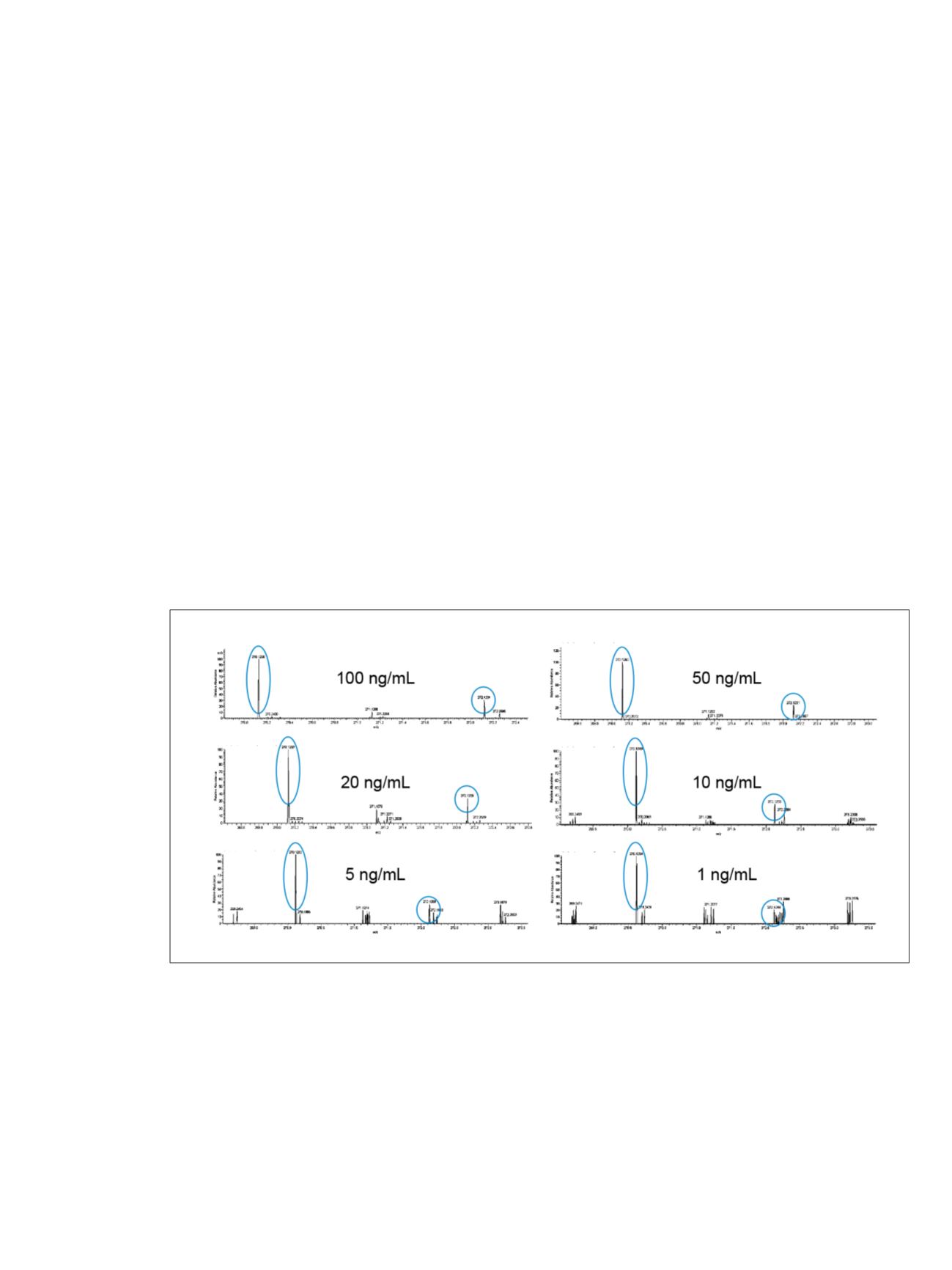

8
Low-Concentration Test Considering Water
Contamination
The analysis method reviewed in this study enables
accurate quantitation analysis within a matter of minutes
and is expected to be of significant value in cause
identification and result notification, allowing rapid
response in the field. However, the majority of water
contamination by chemical substances occurs in
concentration levels of ng/mL, as observed in dioxane
contamination, oil spills, and agricultural pesticide sprays,
among others. Thus, there is a need to perform quantitation
analysis for low-concentration samples. To review the
possibility of detecting trace amounts of the target
compounds in low-concentration samples, acetochlor
(C
14
H
20
ClNO
2
), one of the pesticides outlined in the
previous section, was selected for analysis. The compound
was serially diluted using tap water from the lab to 100,
50, 20, 10, 5, and 1 ng/mL solutions, and 10 µL of each
of the diluted solutions was applied to the surface of a
metal mesh. The mass spectrum for each of the
concentrations is shown in Figure 4. The monoisotopic
mass of acetochlor is 269.271 amu, with chlorine isotopes
at [M+H]
+
270.1258 amu and 272.1231 amu,
respectively. These were observed at a ratio of 3:1 at the
minimum concentration of 1 ng/mL. We can thus
conclude that rapid and accurate quantitation using
DART-Exactive MS presents a promising possibility in
the analysis of trace amounts of target compounds, the
common case in water contamination.
Figure 4. Sensitivity test of acetochlor spiked in tap water



















